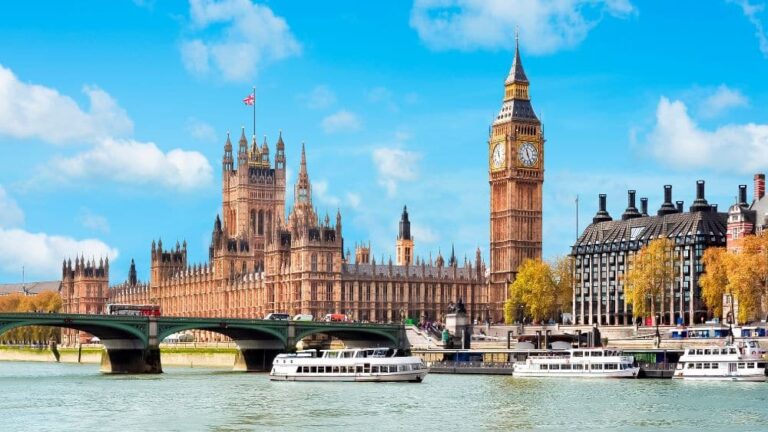
Further HMRC guidance on the abolition of furnished holiday lets
This article was first published in Taxation magazine
John Endacott explains why HMRC’s further guidance on the abolition of furnished holiday lets leaves unanswered questions.
As someone who took part in both in-person and video consultation discussions with HM Treasury (HMT) and HMRC in respect of the abolition of the furnished holiday letting (FHL) regime, I was interested to read the HMRC policy paper “Clarification on the abolition of the furnished holiday lettings tax regime”, as published on 7 November (clarification document).
Having read it though, my overwhelming feeling was one of disappointment. Whilst the document at least engages with a number of areas of complexity, in a very few words, it either avoids the issues, or simply re-states HMRC’s position.
Policy interpretation
HMRC’s view is that income from FHLs is property income and the special rules merely provide additional tax reliefs for FHL property businesses. As set out in my article “No way to run a tax system” from 22 August 2024, I think that may well be the correct interpretation of the income tax and corporation tax legislation as contained in ITTOIA and CTA 2009. However, the HMRC clarification document probably overstates the position when it states:
“Before the repeal the FHL rules provided for specific reliefs but the income has always been property income, not trading, for tax purposes.”
Really? – “for tax purposes”. Section 241 TCGA, as currently drafted, says:
“(3) …for the purposes of the provisions mentioned in subsection (3A) below—
(a) any UK property business, which consists of, or so far as it consists of, the commercial letting of furnished holiday accommodation shall be treated as a trade …
(3A) The provisions referred to in subsection (3) above are—
sections 152 to 157 (roll-over relief on replacement of business asset),
section 165 (gifts relief),
section 169S(1) (business asset disposal relief),
section 253 (relief for loans to traders)”.
The capital gains tax (CGT) treatment isn’t a minor point. One of the major areas of discussion around the draft legislation is paragraph 19 and whether business asset disposal relief (BADR) can be claimed on a sale of a property within three years of 5 April 2025. Given that potentially there is a CGT saving of as much as £100,000 for each taxpayer in 2025/26 and of £60,000 in 2026/27 and 2027/28, then this is a point that is of interest to both taxpayers and advisers alike. I, and others, have queried the lack of clarity in the draft legislation on this point.
The BADR legislation refers to the need for the business to cease in s169I(2). HMRC appears to be interpreting this as referring to the need for the actual business activity to physically cease, as opposed to it being a cessation of a trade as defined within the legislation.
Section 169S(1) says:
For the purposes of this Chapter “a business” means anything which—
(a) is a trade, profession or vocation, and
(b) is conducted on a commercial basis and with a view to the realisation of profits.
The “Chapter” referred to is Chapter 3 and s169I is within Chapter 3. The interpretation of business in s169I is by reference to the definition of a trade. Doesn’t the cessation of an activity being classed as a trade amount to the business ceasing for the purpose of s169I?
Certainly, that has always been my understanding and where holiday letting businesses have previously failed to satisfy the conditions I have always treated that as a cessation for the purpose of s169I and have not advised the client that they must cease to let the property. I don’t think I’m alone in having understood that as how to interpret the position.
HMRC’s view as now set out is:
“The repeal of FHL provisions does not mean that FHL businesses have ceased, it merely disapplies the relevant legislation. The affected businesses will be continuing property businesses, until there is an actual cessation of business activity.”
The issue of cessation is key to CGT. It’s not that relevant to income tax as the statutory mechanics of the legislation are completely different. The corporation tax position is slightly messier as capital gains are subject to corporation tax, but let’s not get distracted by that.
“Disapplies the relevant legislation” is curious wording. Surely the legislation is being changed and the tax statutes re-drafted. Moving on from that, this policy guidance states that the FHL business is a property business both before and after 5 April 2025. Fair enough for income tax and corporation tax, but is that relevant to the CGT analysis?
CGT is full of deeming provisions and it doesn’t follow that the test in s169I is a factual interpretation of whether an activity ceases as a business as opposed to only ceasing as a trade. Whilst s169I refers to cessation of a business, s169S says that business means trade for the purposes of s169I. As far as I can see, a FHL is a trade for CGT purposes on 5 April 2025, and isn’t afterwards.
I, and others, asked HMRC to clarify the draft legislation. I appreciate that getting Parliamentary draughtsperson time is a challenge, but the wording hasn’t changed and all we have been given is a clear statement of how HMRC interprets the position. We should be grateful to HMRC for clearly stating their view, but personally, I’m still not convinced. It may well be that this draft legislation is amended when it gets to Parliament, or that we get a clear ministerial statement on the position as part of the Finance Bill debates, but absent that, this feels like a point that will end up being determined by a tribunal.
Property business vs trade
I asked, and hoped, that we would get better guidance from HMRC as to how it sees the dividing line between what is a trading activity and what is a property business. Whilst I might not agree with HMRC’s dividing line, I thought it would help taxpayers and advisers to better understand their own position and how close they feel they are to the dividing line. You might remember that the (now closed) Office of Tax Simplification asked for a ‘brightline’ test to set a dividing line between property income and trading income.
A statutory test was probably always unrealistic, and has certainly not come to pass. Regardless of that, I had hoped for some better guidance but that has not been forthcoming. Indeed, what little text there is includes the sentence:
“If the profit is derived from the exploitation of land then the income is taxable as property income.”
That is an interesting statement given that s264 ITTOIA says that “generating income from land” is property income but s10 ITTOIA says that “the commercial occupation of land in the United Kingdom is treated for income tax purposes as the carrying on of a trade”. In considering this, it should be noted that property income takes precedence over whether an activity is a trade in accordance with s4 ITTOIA.
My sense of the existing tax legislation is that “income from” is rental income whereas “exploitation of” is more likely a trade. The language used in this clarification note is therefore curious and surprising. The boundary is not a clear one. HMRC wishing that it is doesn’t change the case law and the existing legislation in s10.
We asked for detailed guidance to be published by HMRC on this point in order to minimise mis-information and the prospect of a large number of cases being taken to tribunal. I hope that HMRC will take the opportunity to publish more guidance in due course but if they don’t, then they are only encouraging disputes to have to be determined by a tribunal or a higher court.
FHL businesses commencing in 2024/25
A common question that I have been asked since the announcement of the abolition of the FHL rules in March is about the position of new businesses starting in 2024/25. Under the legislation in place in 2024/25, it is necessary to look forward 12 months from the commencement date as far as the day count tests are concerned. There has been concern as to whether the abolition of the FHL rules impacts on this. HMRC has confirmed that it doesn’t – which isn’t a big concession as I’m not aware of anyone who hadn’t already reached that conclusion. The existing legislation is the existing legislation. This means that day count measuring could extend theoretically as far as 4 April 2026.
Why would anyone care? It’s about capital allowances. The key question on the ground is how late in 2024/25 could a start date be? This is about being able to maximise capital allowances on a property. What have you got to do to ensure that you get within the FHL rules in order to get transitional relief for capital allowances even though you might be starting a year after the announcement of the rules being abolished?
The guidance re-states the legislation and says nothing more. It’s interesting to compare it with the comments on cessation in the clarification document where there is a sentence about how HMRC interprets cessation. There is nothing on commencement. The facts around the meaning of commencement will be crucial and advisers should ensure that they adequately consider this point.
Ownership other than 50:50 – Form 17
With qualifying FHLs, it is currently possible to split a profit from a jointly owned property between spouses or civil partners in whatever proportions the taxpayers choose. That isn’t the case for other property income. From 6 April 2025, if the married couple or civil partners wish to split the income other than 50:50 then it will be necessary to first change the beneficial ownership and to also submit a form 17 to HMRC within 60 days of making the declaration.
There is a potential stamp duty land tax (SDLT) liability if the ownership is altered and there is a large enough mortgage loan on the property. There is more flexibility prior to 6 April 2025 because of the higher 0% SDLT band up to that date and I’m expecting a flurry of properties being transferred into unequal tenants in common ownership during that time, and with forms 17 needing to be filed by the end of May 2025.
What many readers will not at first appreciate about that last paragraph, is that I’m referring to the law of England and Wales. Since the abolition of the FHL rules was announced, I’ve spent some time in discussion with tax experts north of the border and trying to understand how form 17 applies to Scottish land law.
Whilst I’m well aware of the deficiencies of the operation of the form 17 procedure in England and Wales, the position is much more confusing in Scotland, and I don’t feel able to give an opinion on how the rules operate in Northern Ireland.
We raised the deficiencies of form 17 with HMT and HMRC. We asked them to consider improving the process and giving better guidance – especially on the Scottish law position. Also, why is there a 60-day time limit in any case?
Despite these endeavours, the clarification document just states the current rules and offers nothing more. It is disappointing and feels like an opportunity has been missed.
Concluding comments
As is already apparent, I’m pretty unimpressed with the clarification document. It’s an inconsistent document that ducks the issues that have been identified and states what is fairly obvious to an experienced tax adviser. I can see that it will help the unadvised, of which there are many owning FHLs. However, overall, it does nothing to improve my current opinion of HMRC and its approach to the good management of the tax system.

Are you affected?
If you would like to discuss the issues raised in this article, please contact our tax experts.











